Sainsbury’s has kicked off its biggest investment in new stores for a decade. A tour of its Kiln Lane store in Epsom reveals a focus on food-to-go, mission-based shopping and design changes
Sainsbury’s Food First and now Next Level strategies have helped it “reset its value position” and gain share. Now the supermarket is planning its “biggest investment” in new stores for over a decade.
The accelerated rollout will see it add 15 new supermarkets in 2025, including 14 acquired from East of England Co-op and Homebase, as well as a further 25 New Local stores – for a total of about 400,000 sq ft.
The first of the new converted stores opened in Felixstowe on 1 May, but it’s one of its existing stores, at Kiln Lane in Epsom, Surrey, that sets out what the new pipeline will look like. Renovated in November 2024, it’s a test bed for hundreds of new formats and tech trials as part of a new “mission-based” strategy for stores.
Kiln Lane doesn’t just represent Sainsbury’s most up-to-date vision for its physical shops, it represents a change in approach in how the business thinks about its entire store estate, says Darren Sinclair, Sainsbury’s director of future stores and customer experience: “We’ve classified all our stores into various clusters and various missions. It’s allowed us to think much more carefully about what space we put into the store.”
At 100,000 sq ft, Kiln Lane is one of a few categorised as a ‘Destination Plus” supermarket. It stocks Sainsbury’s entire range of food, GM and clothing. “People will travel for miles to come here,” Sinclair says. “We should be meeting their needs.”
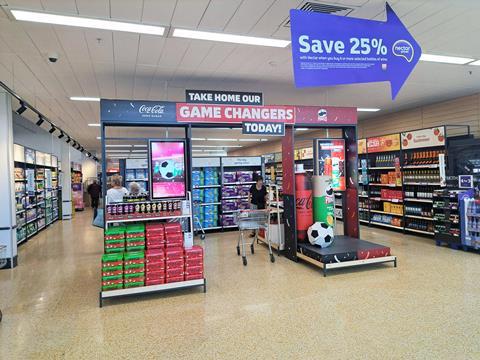
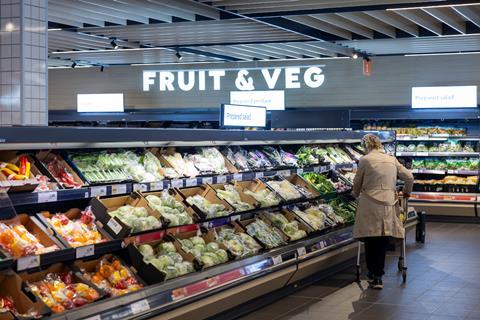
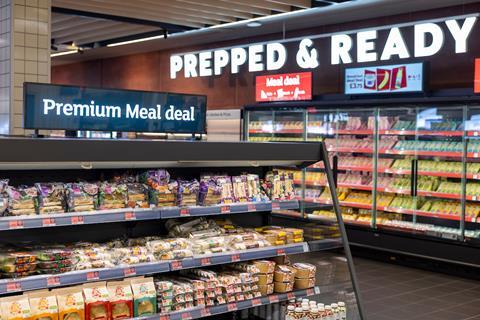
So, what does that look like in principle? Firstly, it’s seen Sainsbury’s bring together complementary items from multiple categories. Meringues and coulis displayed alongside strawberries in the fresh aisle is one example. Freezers have also been brought alongside fridges in some aisles, such as new branded ByRuby fridges, which stock the brand’s frozen ready meals alongside chilled Charlie Bigham’s products.
It gives shoppers more choice, but also more “clarity” over how items compare, Sinclair says.
Read more:
-
First look: inside Asda’s new standalone George store
-
John Lewis kicks off new hospitality push with Jamie Oliver café
-
Buyer’s Guide: How AI is transforming in-store operations
On a mission
Mission-based bays have also been a feature of recent openings, for example at Sainsbury’s Cobham store. And the concept has been dialled up at Kiln Lane.
The store is the first to feature a brand new food-on-the-go hub. Located at the centre of the store, it brings together all Sainsbury’s hot food, sushi counter, coffee, baked goods and lunchtime meal deals into one area. It’s immediately next to the self-checkouts, allowing shoppers to pop in and leave easily. Sainsbury’s plans to roll the concept into more stores by the autumn.
Time is another friction point for shoppers, and Sainsbury’s has designed Kiln Lane to be “easier to navigate”, Sinclair says. It’s seen a major change to in-store signage that’s being rolled out to its wider estate.
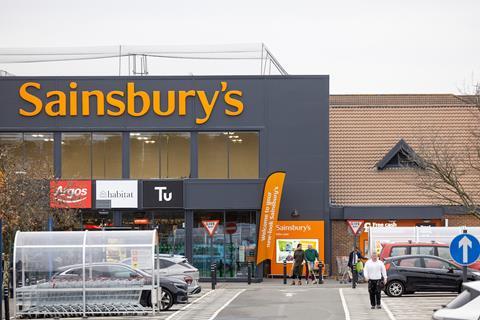
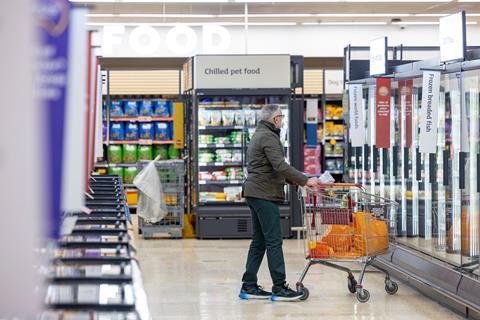
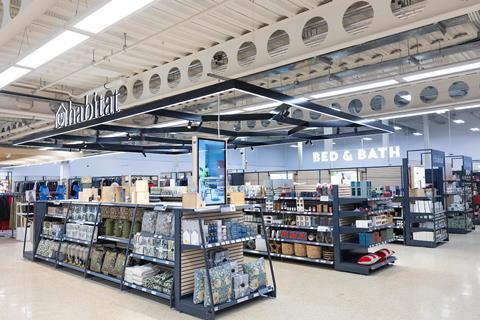
It’s stripping out almost all ceiling signage, so only the categories that are “most important” to shoppers locally are highlighted in bright white overhead signs, visible from almost anywhere in store. The categories highlighted at Kiln Lane include ‘Dairy’ and ‘Prepped & Ready’.
Sainsbury’s has also “streamlined colour significantly” when it comes to PoS signage. At Kiln Lane, only two colours appear on shelf signage. Purple, to highlight its now prevalent Nectar Prices, and red to promote its Aldi Price Match.
Nowhere is that more apparent than the purple ‘power aisle’ at Kiln Lane. Every gondola end features a different set of Nectar promotions, interspersed with digital screens. Colour is a motif repeated in Kiln Lane’s clothing section, with yellow shelving used to highlight children’s ranges. Sainsbury’s has also switched from cream shelving to grey shelves in its newest stores.
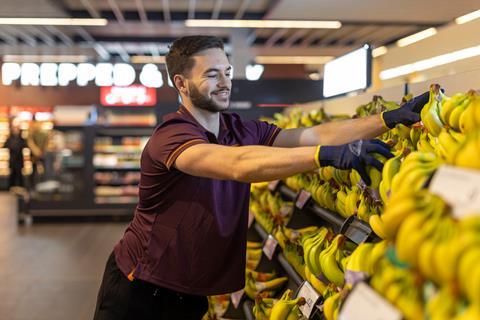
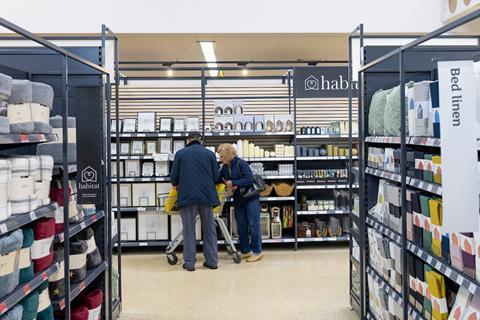
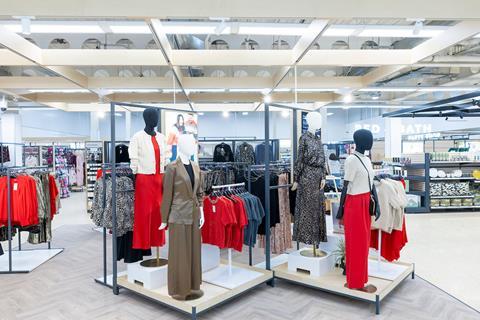
Most of the colour should come from the produce being displayed on shelves, Sinclair says. The hope is that customers see purple and red as “value cues”.
“They know they’re in Sainsbury’s, so we don’t really need to tell them with orange,” Sinclair says.
The format changes come alongside a number of new payment trials, an increased rollout of digital screens, and some other, lower-tech initiatives, like more seating for shoppers and more mobility trolleys.
Summing up, Sinclair says: “The first part of Food First focused on making stores more efficient. Now it’s about making them much easier to shop.”



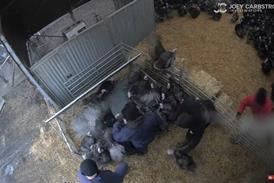

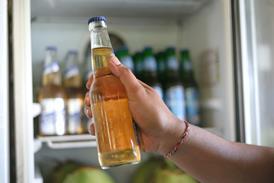

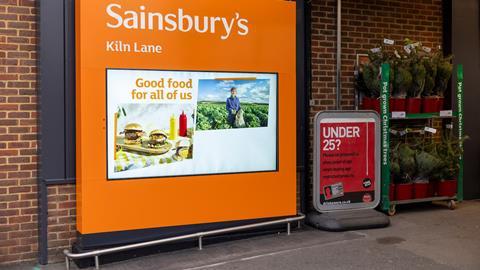

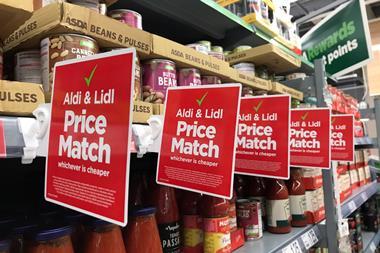
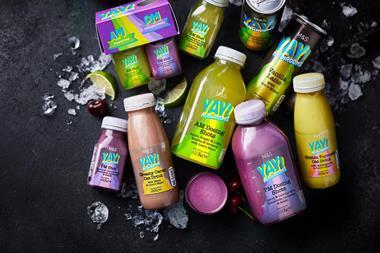


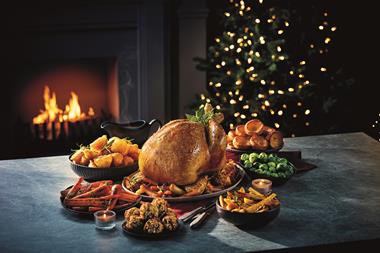
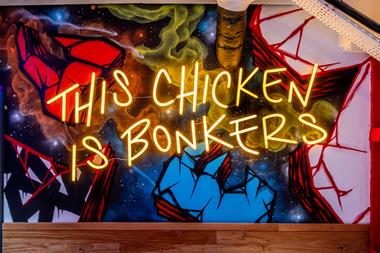

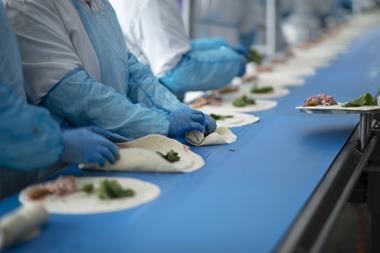

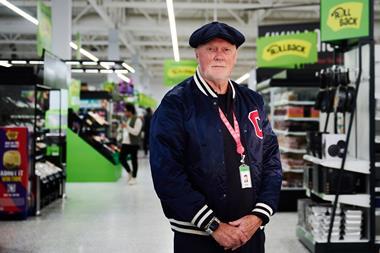
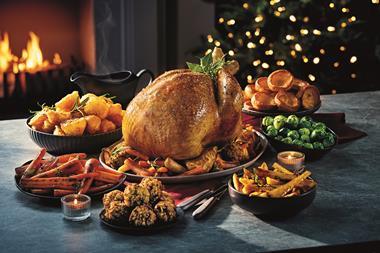
No comments yet